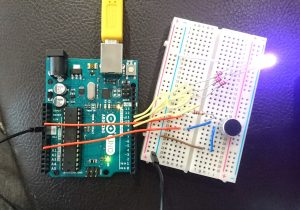In Manovich Lev’s ‘The Language of the New Media’ he identifies new media to fall under five categories: Numerical Representation which is the language used to generate outputs in machinery; Modularity which means it has various components of which a new media work can be separated; Automation which is the removal of human intentionality in the work; Variability which means that the work can have a range of outputs/outcomes/reactions; and finally Transcoding which is the ability to turn ‘physical information’ like sound, text, etc, into a set of code that can be read by the computer.
For mine and En Cui’s project, we make use of four out of five of this categories, namely numerical representation, modularity, variability and transcoding.
When we are oconsider the idea of numerical representation, so long as we are creating things on a digital platform, our written codes for our project to function is a form of numerical representation. Numerical representation is the digital language that machinery use to communicate hence it is present in all projects that make use of technology.
Subsequently, We have the idea of modularity. Modularity is shown in various layers in thir work. It could be seen in the components that make up the body of the project, like the wires, LEDs and microphone.

It could also refer to our project’s ability to capture data at different points in time in the form of different coloured LED lights, and within that collection, create another collective image of the environment at different points in time.

A bit like Rafael Lozano-Hemmer’s work ‘Pulse Index’, we are looking at how the individual components make up a bigger collective, and how that collective changes over time, which changes the outcome of the work at each time.
Moving on to the idea of variability, the entire idea of our work revolves around the idea of different sounds, merging overlapping and melding to the point that you cannot figure out if it is your own voice or an influence of the environment. Hence the variable in our project comes in the form of the sound input and a corresponding unique coloured light output. Each output would depend on the pitch and volume of the sound recorded by the microphone. Since different people have different pitches in tone, and volume of which they speak each led at different points in time will be different.
Finally, there is the idea of Transcoding where physical information is translated into data code that can be read by the computer. In this case it is the idea of sound that has been picked up by the microphone, being converted into code that is later translated into the values of RGB and brightness that is reflected on the LED.
